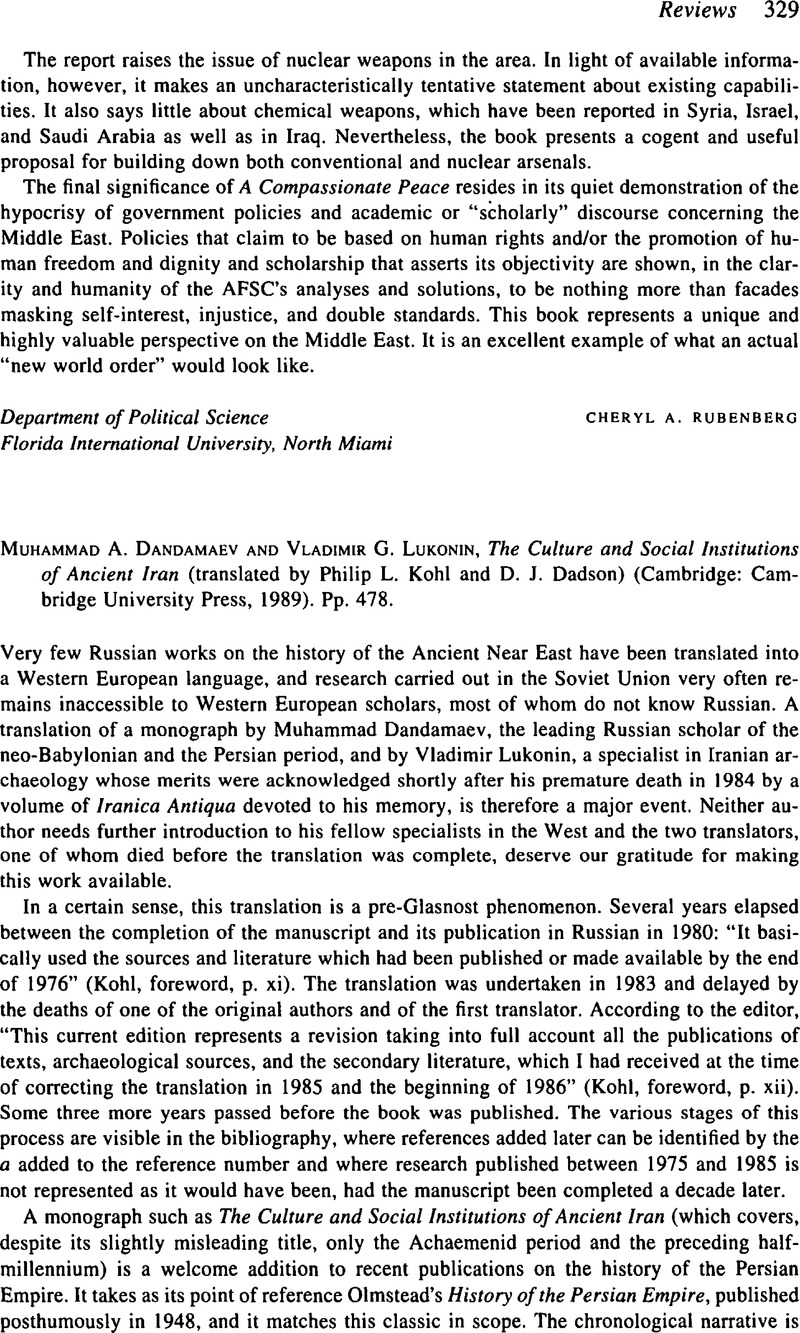No CrossRef data available.
Article contents
Muhammad A. Dandamaev and Vladimir G. Lukonin, The Culture and Social Institutions of Ancient Iran (translated by Philip L. Kohl and D. J. Dadson) (Cambridge: Cambridge University Press, 1989). Pp. 478.
Published online by Cambridge University Press: 29 January 2009
Abstract

- Type
- Reviews
- Information
- Copyright
- Copyright Cambridge University Press 1992
References
1 Cook, J. M., The Persian Empire (London, 1983);Google ScholarFrye, R. N., The History of Ancient Iran (Munich, 1983);Google ScholarRoot, M. C., The King and Kingship in Achaemenid Art, Acta Iranica 19 (Leiden, 1979); Cambridge History of Iran, vol. 2: The Median and Achaemenian Periods (Cambridge, 1985);Google ScholarBriant, P., Rois tributs et paysans (Paris, 1982);Google ScholarCalmeyer, P., Zur Genese altiranischer Motive VIII, Die Statistische Landcharte des Perserreiches, Archologische Mitteilungen aus Iran 15 (1982), 10587;Google Scholaribid., 16 (1983), 141222.
2 Boyce, M., History of Zoroastrianism, vol. 1 (Leiden, 1975).Google Scholar
3 Shahbazi, A. Sh., An Achaemenid Symbol I: A Farewell to Fravahr and Ahuramazda, Archologische Mitteilungen aus Iran, 7 (1974), 13544.Google Scholar
4 Stolper, M., Entrepreneurs and Empire (Leiden, 1985);Google ScholarKoch, H., Steuern in der achmenidischen Persis?, Zeitschrzft fr Assyriologie, 70 (1980), 10537;Google ScholarZu den Lohnverhltnissen in der Dareioszeit in Persien, Archologische Mitteilungen aus Iran, 10 (1983), Supplement, 1950;Google ScholarLewis, D. M., Postscript 1984, in Burn, A. R., Persia and the Greeks (London, 1984);Google ScholarBriant, P., Ethnoclasse dominante et populations soumises dans l'empire Achmnide: le cas l'Egypte, Achaemenid History III: Method and Theory (Leiden, 1988), pp. 13774.Google Scholar
5 Genito, B., The Medes. A Reassessment of the Archaeological Evidence, East and West, 36 (1986), 1181;Google ScholarMuscarella, O. W., Median Art and Medizing Scholarship, Journal of Near Eastern Studies, 46 (1987), 10927.CrossRefGoogle Scholar
6 This contradictory opinion seems rather oddly rendered by a reference in the text to this article: See the Detailed Discussion in 541 (Nylander, , Al-Beruni and Persepolis, Acta Iranica, 1 (1974), 13750);Google Scholar cf. also Root, , King and Kingship, n. 1;Google ScholarCalmeyer, , Textual Sources for the Interpretation of Achaemenian Palace Decorations, Iran, 18 (1980), 55.CrossRefGoogle Scholar
7 Boucharlat, Cf. R., Monuments religieux de la Perse achmnide. Etat des questions, Temples et Sanctuaires, Travaux de la Maison de l'Orient 7 (Lyons, 1984), pp. 129 f., for the discussion and previous bibliography.Google Scholar




